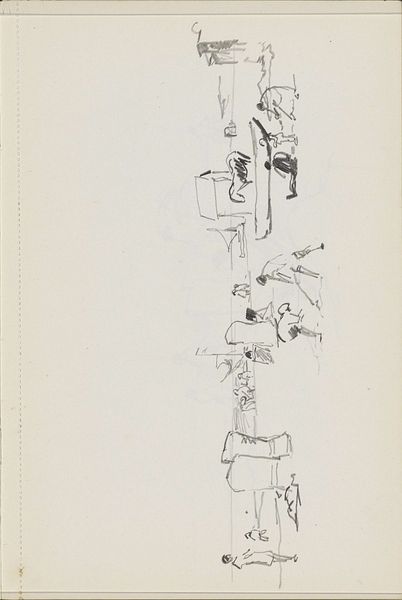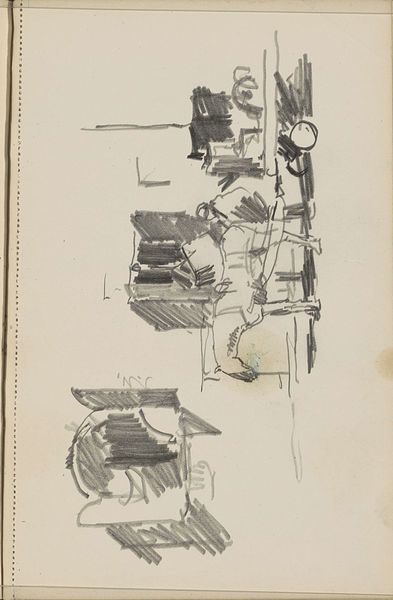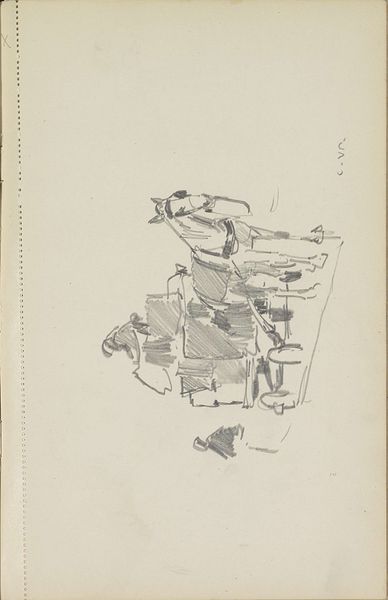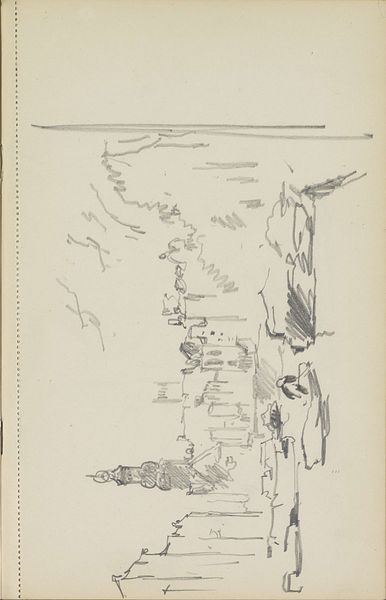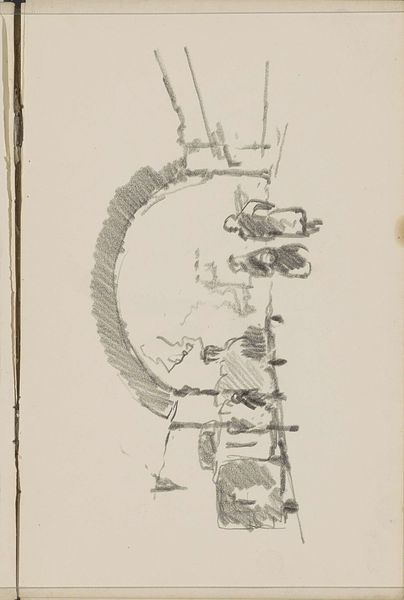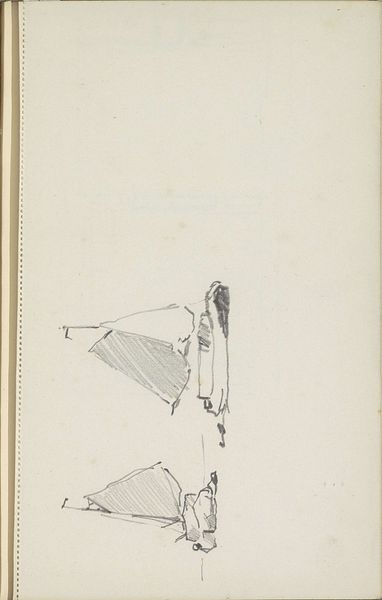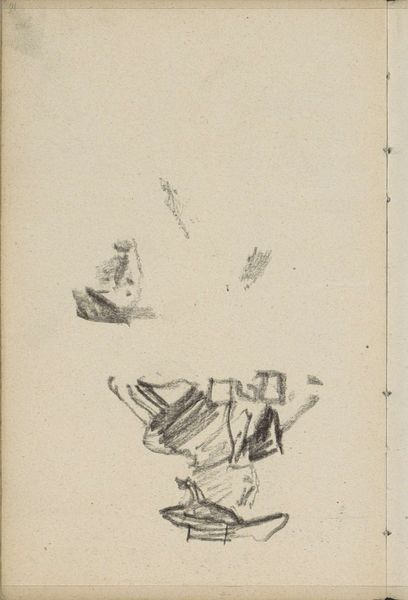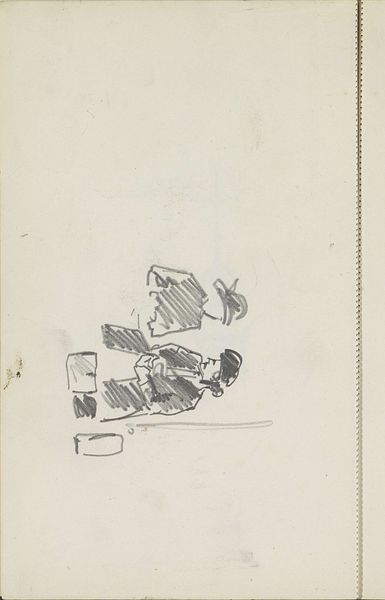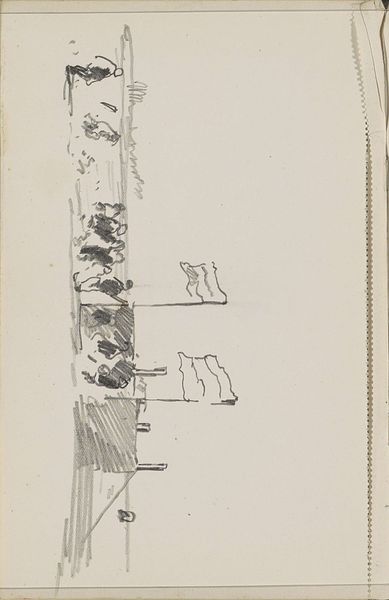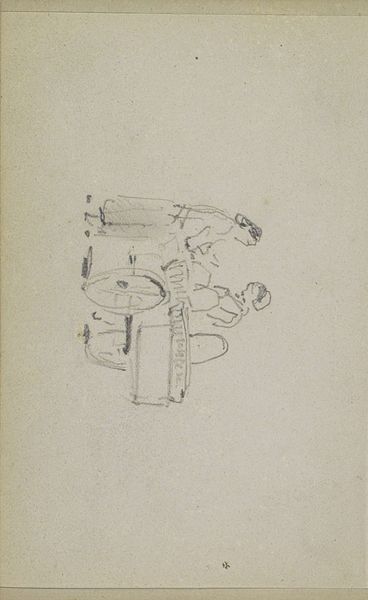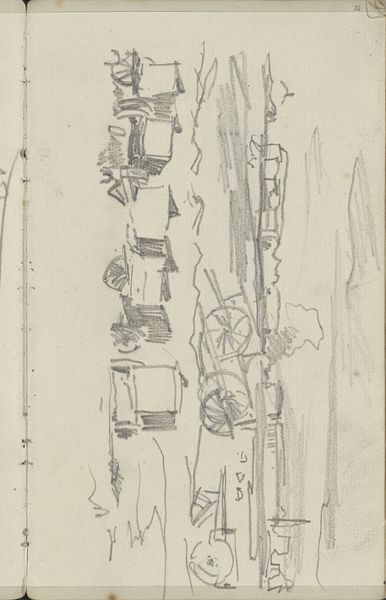
drawing, ink, pencil
#
drawing
#
landscape
#
ink
#
pencil
#
realism
Copyright: Rijks Museum: Open Domain
Curator: This is Cornelis Vreedenburgh's drawing, "Koets met twee paarden en een koetsier," or "Carriage with Two Horses and a Coachman." It was made sometime between 1890 and 1946. Editor: My first thought is the drawing feels incredibly fragile, ephemeral, almost disappearing from the page. The quick strokes suggest movement, but the muted tones create a sense of stillness. Curator: The application of pencil and ink gives it that sketched quality, perfectly capturing a fleeting moment. Vreedenburgh was known for his landscapes. Think about the horse-drawn carriage, the primary mode of transport before cars dominated society, particularly in more rural areas, signifying social class and lifestyle. Editor: Exactly! The formal rendering reduces this societal marker to almost pure line. Note how Vreedenburgh uses minimal shading to define form. There's an economy of line that directs the viewer's eye across the composition, suggesting volume and movement without unnecessary detail. It brings to mind certain exercises in design fundamentals. Curator: It's an interesting insight to consider. Perhaps it wasn’t meant as a standalone finished work, but part of a series of studies, and studies provide art historians with context as we aim to grasp how visual representation intertwined with daily life, capturing snippets of society at different layers and functions. Editor: Agreed, viewing the carriage and its occupants primarily as shapes allows us to engage with the pure, unadulterated language of the artwork. In this form, lines constitute symbolic relations as simple geometry in complex constructions. It feels incredibly modern, stripped bare. Curator: We must recognize it's rooted in the context of its creation. It's tempting to strip away its contextual relevance when considering technique, however the artist and artwork were still responding to their respective historical and cultural stimuli and landscape. Editor: I can see your perspective. Viewing art can serve a reminder that technique and societal understanding go hand in hand, giving artwork greater richness. Curator: Indeed. Thank you for pointing out details I didn’t spot right away; I’m now wondering what elements were essential and those merely additional for social symbolism. Editor: Thank you, and perhaps in time new ways to relate its different perspectives will come to light.
Comments
No comments
Be the first to comment and join the conversation on the ultimate creative platform.
